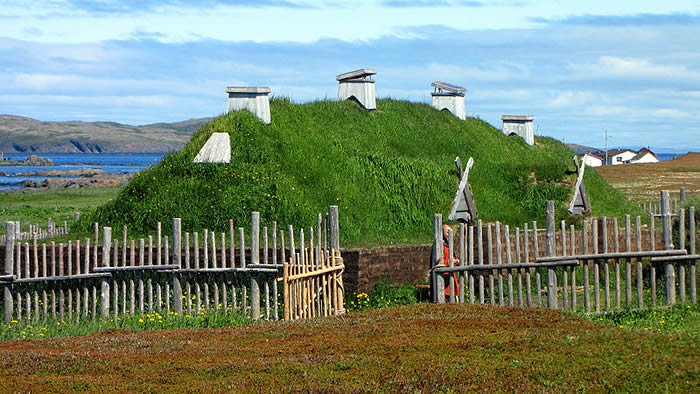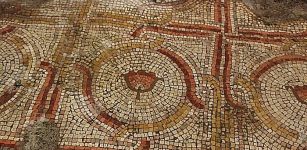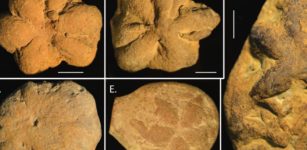Discovery Of Second Viking Site Point Rosee In North America Could Re-Write Ancient History
Ellen Lloyd - AncientPages.com - Archaeologists may have discovered the second Viking site ever found in North America. It’s a truly significant historical find that offers tantalizing evidence of a Viking presence 300 miles from the only place in Canada they’d ever been seen before.
According to scientists examining the area, Point Rosee, the ancient site can be traced to the Vikings. If it was not established by the Viking then we are seeing ancient remains of an entirely new culture that looks exactly like the Norse.
Until now, the Icelandic Sagas have led archaeologists to only one actual, verified Norse historical site in the New World. It is the 1000-year-old seaside settlement L’Anse aux Meadows on the northernmost tip of Newfoundland discovered in 1960 by Norwegian Helge Ingstad.
When Helge Ingstad and his wife who was an archaeologist excavated the site, they discovered several artifacts that appeared to be of Norse origin. These finds suggest that the L'Anse aux Meadows site was a base-camp or gateway to the rich lands around the Gulf of St. Lawrence, which is likely the Vinland of the sagas.
Vinland is the area of coastal North America and Newfoundland explored by Norse Vikings, where explorer Leif Erikson first landed in ca. 1000, approximately five centuries prior to the voyages of Christopher Columbus.
L'Anse aux Meadows
Considering the many contacts described in the sagas, it is strange that so few Norse artifacts have been found in the many Native archeological sites that have been excavated in the Vinland region between Newfoundland and New England.
Still, archaeologists believe there could be a number of ancient Viking sites that simply have not been found yet.
Now, archaeologists have finally made an exciting discovery that could re-write the history of Vikings in North America. Scientists found a fire-cracked stone and some mangled scraps of iron unearthed from a muddy patch of ground called Point Rosee.
Archaeologist Sarah Parcak says it is either an ancient Viking site or “an entirely new culture that looks exactly like the Norse and we don’t know what it is.”
This find might confirm the belief that the Norse presence here was fleeting — just another short-lived expedition by a seafaring society. Or it could touch off a wave of discoveries of other Norse settlements in the region, proving that the Vikings strayed farther and stayed longer in the New World than anyone realized.
Sarah Parcak is a space archaeology expert. Using satellite images taken by cameras 400 miles above the Earth, Parcak scans for telltale variations in the landscape — discolored soil, changes in the vegetation — that suggest something might be lying beneath them. With an infrared scanner, Parcak can even pinpoint hints of underground chambers and buried buildings.
Chase Childs, left, and Sarah Parcak, right, excavating the site at Point Rosee. (Greg Mumford)
Last year, she and her husband and partner Greg Mumford and Canadian archaeologist Frederick Schwarz turned their eyes in the sky on North America. They weren’t explicitly looking for signs of the Vikings. Initially, they didn’t even bring a Norse specialist with them, knowing it was far more likely that whatever settlement they uncovered belonged to Canada’s indigenous people or to later European settlers.
But when they uncovered turf structures and a shallow hearth littered with bits of cooked bog iron, they knew they’d found something important. There is only one other pre-Columbian iron processing site in all of North America — at L’Anse Aux Meadows.
Though further excavation, analysis and input from experts is needed to verify the time period and cultural affiliation of the finds, the evidence seems to point in one direction: this site was established by the Vikings.
Why they established it remains unclear. The purpose of the “turf structures” remains unknown. In fact, they could anything — homes, storage facilities, or something else entirely. In addition, very few other artifacts have been found at Point Rosee which is rather typical of the Vikings since their settlements usually lasted only a short time.
The archaeologists are careful to hedge when they discuss Point Rosee and its implications. Parcak acknowledges there isn’t yet a “smoking gun” that absolutely confirms the site as Norse.
Left: The fire-scorched face of a boulder at the probable iron ore roasting site. Right: One of the larger lumps of roasted bog iron ore excavated from the site. (Greg Mumford)
“This is going to take years of careful excavation, and it’s going to be controversial,” she said. “It raises a lot more questions than it answers.”
The main sources of information about the Norse voyages to Vinland are two Icelandic sagas, the Saga of Eric the Red and the Saga of the Greenlanders.
See also:
Viking Ingvar The Far-Travelled And His Great Expedition To The East
Mystery Of Famous Viking Ruler Rollo: DNA Experts Seek The Truth About His Identity
Mystery Of The Brave Viking Chief Buried On The Gokstad Ship
The oldest commonly acknowledged surviving written record of Vinland appears in Descriptio insularum Aquilonis, by Adam of Bremen, a German (Saxon) geographer and historian, written in about 1075. To write it he visited the Danish king Svend Estridsen, who had knowledge of the northern lands and told him of the "islands" discovered by Norse sailors far out in the Atlantic, of which Vinland was the most remote.
But there is a lot of controversy over the location of Vinland and Viking presence in North America.
Leif Erikson discovers America by Christian Krogh (1893)
In geographical terms, Vinland is sometimes used to refer generally to all areas in North America beyond Greenland that were explored by the Norse. In the sagas, however, Vinlandis sometimes indicated to not include the territories of Helluland and Markland, which appear to also be located in North America beyond Greenland.
Archaeologists and historians have simply not been able to determine the true location of Vinland, not yet.
This is exactly why the excavations in North America are so significant in relation to Vikings’ presence in the New Land.
Future excavations and further studies of ancient sites like Point Rosee will a better insight into the history of the Vikings in North America.
Written by - Ellen Lloyd AncientPages.com
Expand for references
























